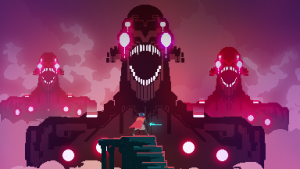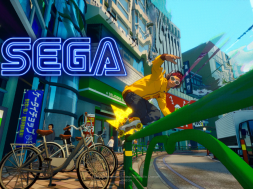
The Triforce of Modern Gaming
It’s fair to claim that, looking in from the outside, today’s gaming industry has become defined by three main features; killing, sports and kid-friendly content.
The first component is fairly self-explanatory. First person shooters and games centred around gun combat in particular have dominated the gaming market in recent years. Franchises such as Call of Duty, CS:GO and Battlefield have become household names for most gamers today. These gaming series not only have some of the biggest followings in the world, but they are some of the most popular games in the history of gaming.
Even gamers who aren’t fans of modern combat still engage in the ‘killing’ aspect of gaming through franchises such as The Elder Scrolls, Dark Souls and The Witcher. Sure, the combat may be more old school and fantastical, but the concept is ultimately the same; kill the baddies!
The sporting element of today’s gaming industry is just as clear cut. There probably aren’t many gamers out there today that haven’t at least tried FIFA. Even those who have never held a controller know of the franchise and its standing in the world of gaming. While FIFA alone has made enough of an impact to last several life times, there’s also the likes of the NBA, UFC and NFL annual series. With these franchises added to the mix, it’s nearly impossible to ignore the intrinsic link between sport and gaming today.
When there’s no guns left to shoot and no balls left to kick, that’s where the kid friendly content comes in. While we older gamers may not play them ourselves, we know all about Minecraft, Roblox and Lego-themed games. Let’s be honest, most of us own at least one Lego video game, and have no shame in admitting they’re probably more fun than half the games on our shelves!
Narrow Representation
Each of these features has come to dominate the way in which gaming is represented on a global level. Now, I don’t think this is inherently a bad thing. Each of these components have instalments that have ultimately resulted in a positive outcome. The newest addition to the franchise, Call of Duty: World War II is set to provide an immersive and authentic experience that could act as important history lesson for players. Similarly, the sporting game Forza Motorsport 7 will be an integral part in displaying the true power of the Xbox One X’s 4k resolution. And finally, the remastered version of the Crash Bandicoot N. Sane Trilogy brought more joy to gamers than any other game in years.
However, I feel like these components have become almost the sole representatives of the gaming industry, resulting in narrow representation. Gaming is about much more than shooting people dead and scoring goals. At the end of the day, gaming is an art form. A means of understanding and expression.
More Than Just A Game
It’s often easier to just sit down and enjoy a game at face value. However, I think it’s important to step back every now and then and contemplate just how much of an art form game development is. Even for games like FIFA, there are entire teams dedicated to the sound, design and controls of the game. These teams work simultaneously together and individually to create a fine tuned experience for the player. Much like an orchestra preforming a complex symphony.
Take the indie game Hyper Light Drifter as an example. Without looking too deep into it, the game is a quirky and fun game with a distinctive The Legend of Zelda: A Link to the Past, feel to it. However, when you delve deeper into the games development, it becomes clear that these surface components are not the most important part.
In short, the game’s primary developer and creator, Alex Preston, has a number of serious heart conditions which will ultimately end his life. Preston has come to terms with this fact, but decided that he needed to leave something behind him that he could be proud of. The result? Hyper Light Drifter.

The game is stunningly beautiful and embodies all of the Preston’s deepest fears and wildest dreams, as well all the strongest emotions he’s felt while living life with an incurable illness. Not only did Preston pour himself into the game, but his whole team did, and the outcome is tangible. Every animation and every sound found in the game is meant to represent something beyond a video game. Sure, the functional components of the game make it fun, but it’s the underlying components that make the game into an intriguing art form.
Taking A Step Back
So what am I trying to get at here? Well, I’m not trying to say that every time you play a game you should analyse every aspect of its making. At the end of the day, games are made for entertainment. You should enjoy them without feeling the need to research every little detail of their development process.
However, there’s no harm to take a step back every once in a while. Think about why a certain song was added to a cut scene, or why a character was designed in a particular way. Remember that nothing is ever put into a video game by accident. Learning to find the artistic merit in a video game is a rewarding experience. It can change how you view your favourite games and bring you a new sense of understanding. Give it a try.










